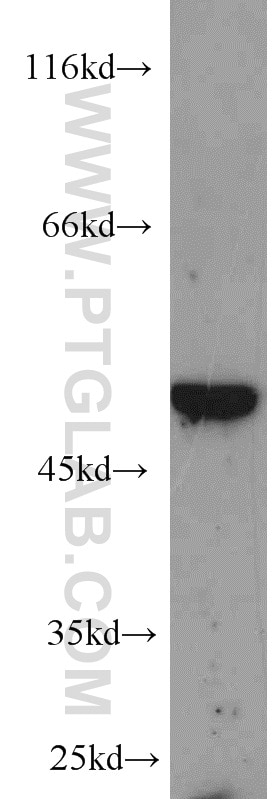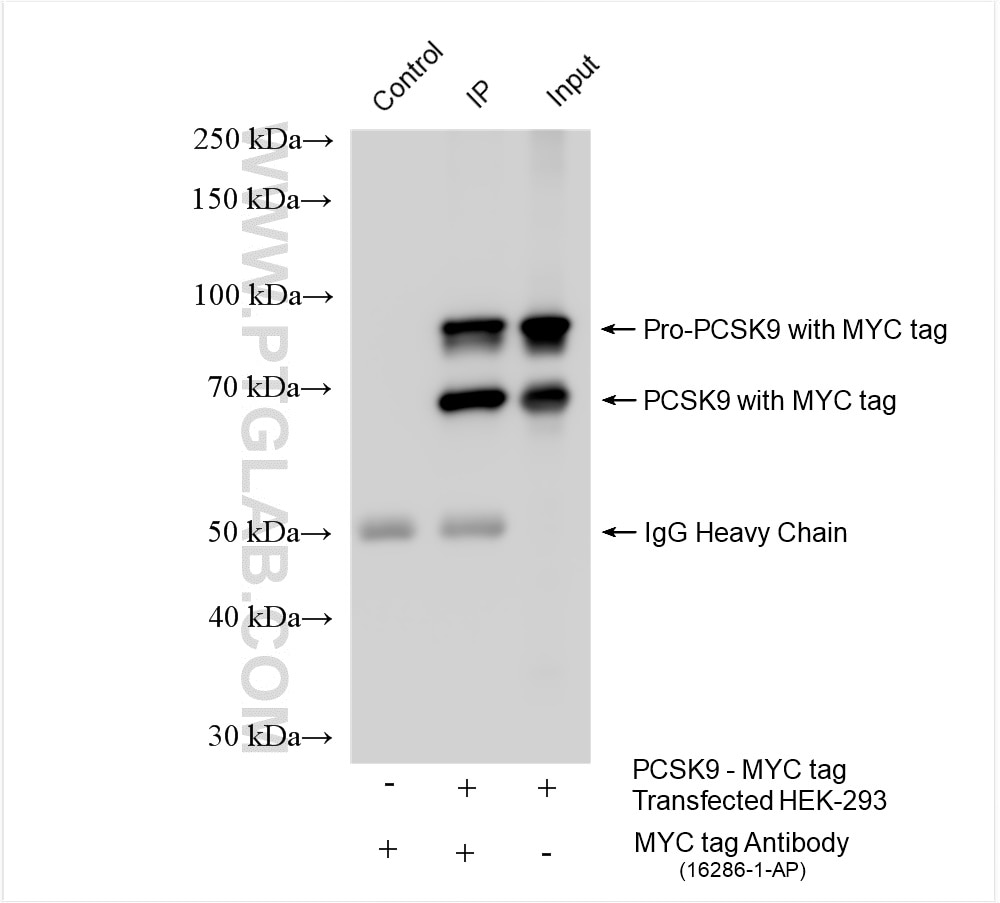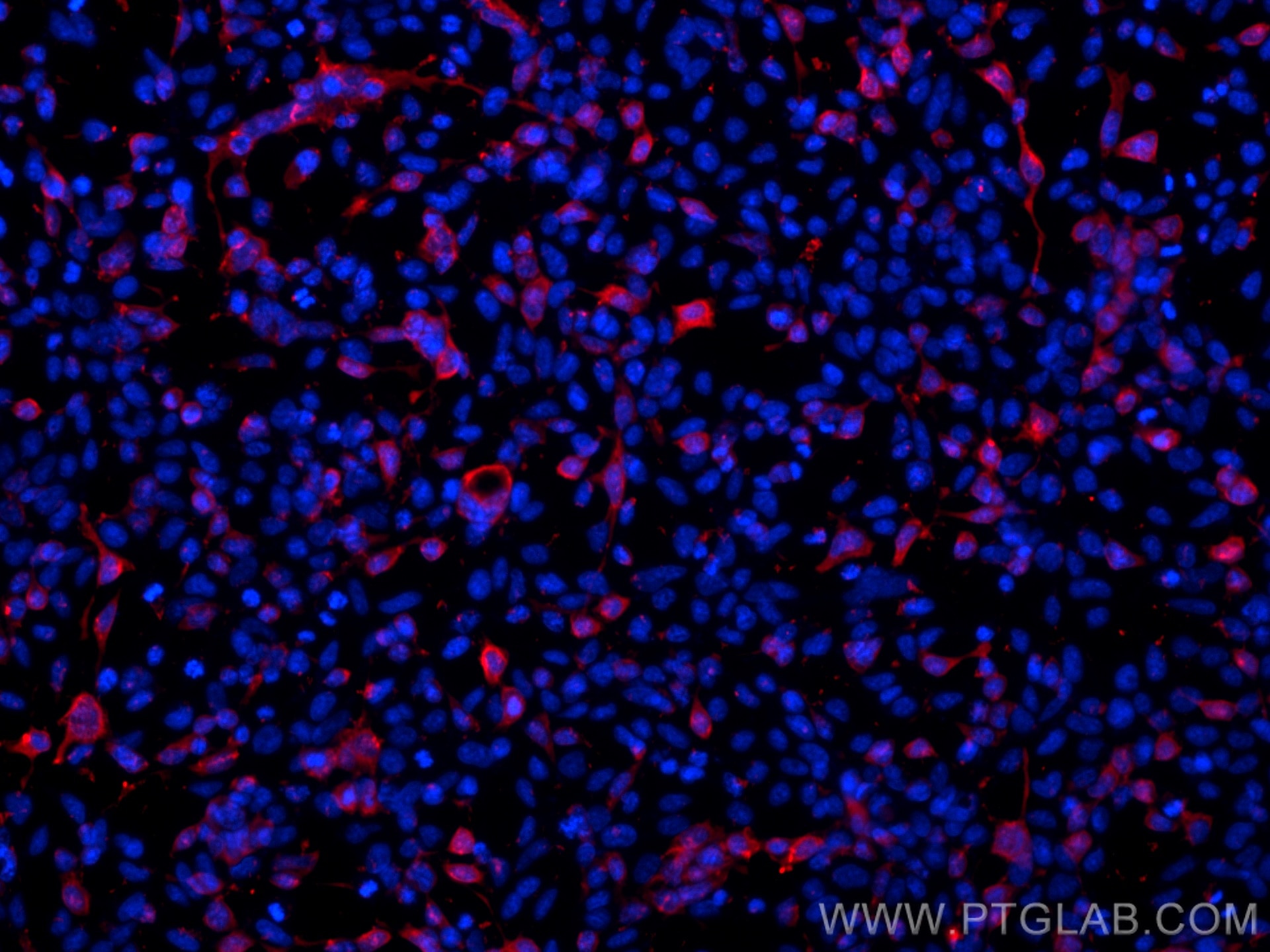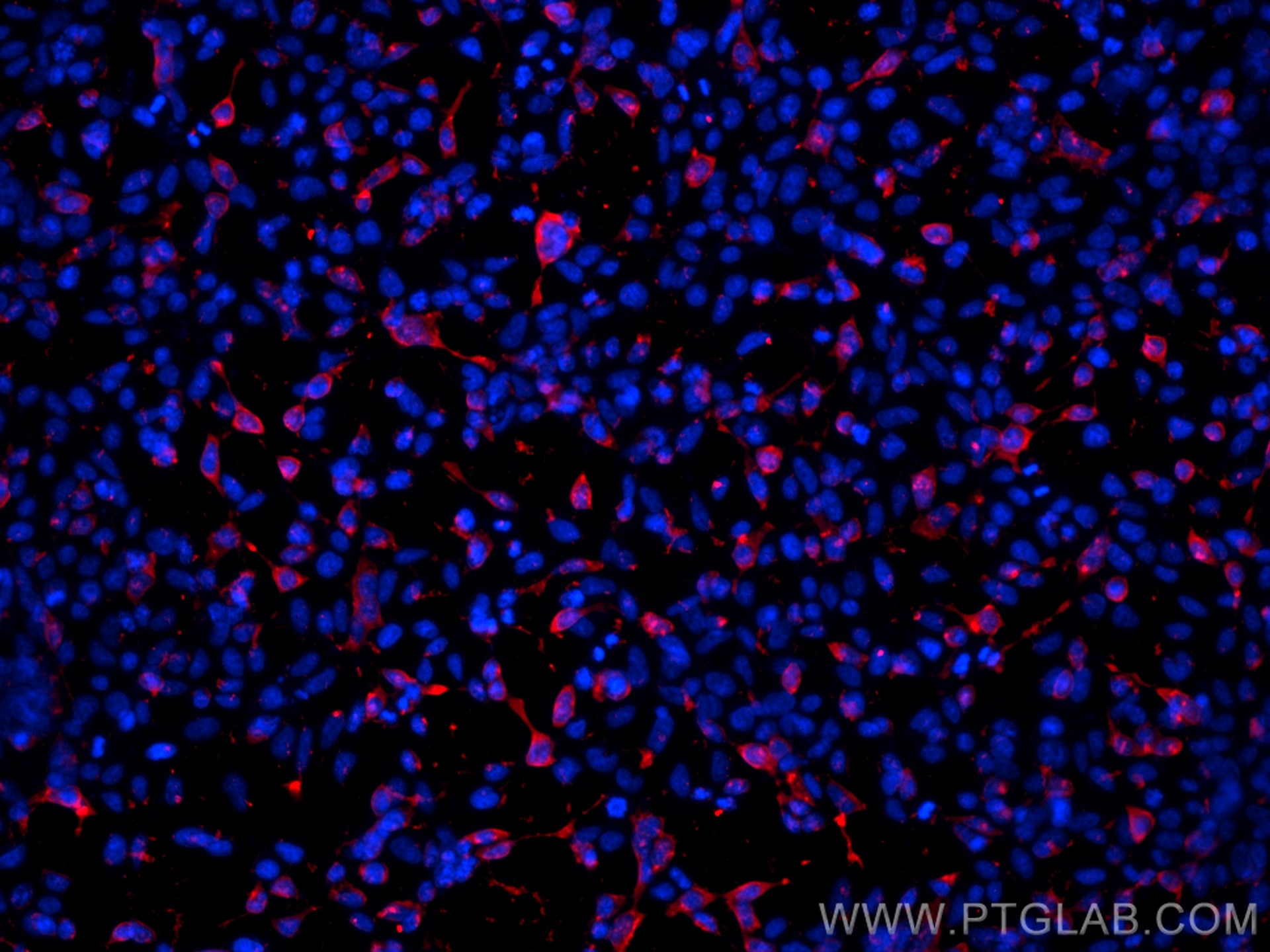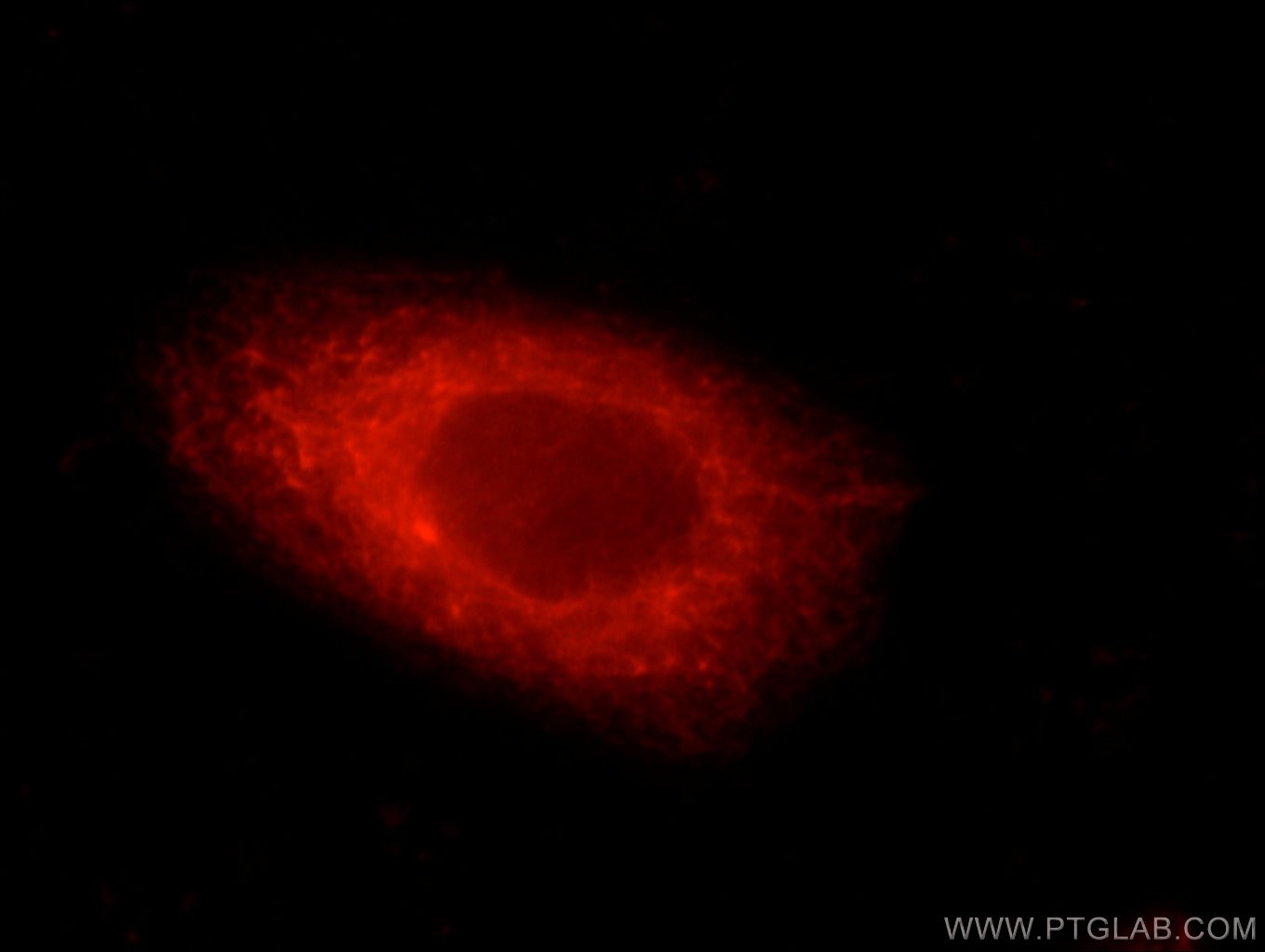MYC tag Polyklonaler Antikörper
MYC tag Polyklonal Antikörper für WB, IF/ICC, IP, ELISA
Wirt / Isotyp
Kaninchen / IgG
Getestete Reaktivität
rekombinanten Protein und mehr (4)
Anwendung
WB, IHC, IF/ICC, IP, CoIP, ChIP, RIP, ELISA
Konjugation
Unkonjugiert
Kat-Nr. : 16286-1-AP
Synonyme
"MYC tag Antibodies" Comparison
View side-by-side comparison of MYC tag antibodies from other vendors to find the one that best suits your research needs.
Geprüfte Anwendungen
| Erfolgreiche Detektion in WB | Rekombinantes Protein Protein, Recombinant protein |
| Erfolgreiche IP | Transfizierte HEK-293-Zellen |
| Erfolgreiche Detektion in IF/ICC | Transfizierte HEK-293-Zellen, MCF-7-Zellen |
Empfohlene Verdünnung
| Anwendung | Verdünnung |
|---|---|
| Western Blot (WB) | WB : 1:1000-1:8000 |
| Immunpräzipitation (IP) | IP : 0.5-4.0 ug for 1.0-3.0 mg of total protein lysate |
| Immunfluoreszenz (IF)/ICC | IF/ICC : 1:200-1:800 |
| It is recommended that this reagent should be titrated in each testing system to obtain optimal results. | |
| Sample-dependent, check data in validation data gallery | |
Produktinformation
16286-1-AP bindet in WB, IHC, IF/ICC, IP, CoIP, ChIP, RIP, ELISA MYC tag und zeigt Reaktivität mit rekombinanten Protein
| Getestete Reaktivität | rekombinanten Protein |
| In Publikationen genannte Reaktivität | human, Affe, Hausschwein, Maus |
| Wirt / Isotyp | Kaninchen / IgG |
| Klonalität | Polyklonal |
| Typ | Antikörper |
| Immunogen | MYC tag fusion protein Ag9409 |
| Vollständiger Name | Myc tag |
| Gene symbol | Myc tag |
| Gene ID (NCBI) | 99 |
| Konjugation | Unkonjugiert |
| Form | Liquid |
| Reinigungsmethode | Antigen-Affinitätsreinigung |
| Lagerungspuffer | PBS with 0.02% sodium azide and 50% glycerol |
| Lagerungsbedingungen | Bei -20°C lagern. Nach dem Versand ein Jahr lang stabil Aliquotieren ist bei -20oC Lagerung nicht notwendig. 20ul Größen enthalten 0,1% BSA. |
Hintergrundinformationen
The myc-tag is a short synthetic polypeptide sequence derived from c-myc protein that can be added to recombinant proteins to enable isolation and study when an antibody is not available. This antibody recognizes the MYC tag EQKLISEEDL.
What is the molecular weight of myc?
1203Da: the ten amino acid myc tag sequence is EQKLISEEDL (in single letter code).
What are the applications for myc tag?
The addition of the myc tag to a particular protein can be useful when an antibody is not available to the protein of interest. Using recombinant DNA technology, the myc tag can be fused to the protein and then an antibody against the myc tag can be used to probe (PMID: 24490106). This is a reliable method and can be used in a number of different techniques, including purification using chromatography, tracking the protein in localization studies using immunofluorescence, or quantifying levels using Western Blot (PMID: 24490106).
What is the structure of myc tag?
The c-myc gene from which this tag is derived has a molecular weight of 49kDa, but the myc tag represents only a small portion of the C-terminus of this gene. The short polypeptide sequence can be fused to the N-terminus or the C-terminus of any protein without influencing function, although it is advised to avoid fusing it to a secretory signal. A cleavage site behind this tag is also sometimes engineered to allow removal with a specific protease.
Protokolle
| PRODUKTSPEZIFISCHE PROTOKOLLE | |
|---|---|
| WB protocol for MYC tag antibody 16286-1-AP | Protokoll herunterladen |
| IF protocol for MYC tag antibody 16286-1-AP | Protokoll herunterladen |
| IP protocol for MYC tag antibody 16286-1-AP | Protokoll herunterladen |
| STANDARD-PROTOKOLLE | |
|---|---|
| Klicken Sie hier, um unsere Standardprotokolle anzuzeigen |
Publikationen
| Species | Application | Title |
|---|---|---|
Signal Transduct Target Ther TRAF3 activates STING-mediated suppression of EV-A71 and target of viral evasion | ||
Signal Transduct Target Ther Circulating tumor cells shielded with extracellular vesicle-derived CD45 evade T cell attack to enable metastasis | ||
Nat Microbiol Ephrin receptor A2 is an epithelial cell receptor for Epstein-Barr virus entry. | ||
Drug Resist Updat MYC expression and fatty acid oxidation in EGFR-TKI acquired resistance | ||
Cell Stem Cell A primate-specific endogenous retroviral envelope protein sequesters SFRP2 to regulate human cardiomyocyte development | ||
Nat Commun The CUL5 E3 ligase complex negatively regulates central signaling pathways in CD8+ T cells |
Rezensionen
The reviews below have been submitted by verified Proteintech customers who received an incentive for providing their feedback.
FH RASHMI (Verified Customer) (08-26-2024) | I used this antibody recently for ABC staining, it worked great, highly recommended.
|
FH RASHMI (Verified Customer) (07-26-2024) | used this product, highly recommended
|
FH Nazarine (Verified Customer) (02-01-2024) | Works well for Western Blot, IF, IP
|
FH Nazarine (Verified Customer) (02-01-2024) | Works well for Western Blot and IF and IP
|
FH Amy (Verified Customer) (03-05-2023) | Detected overexpressed Mac-tagged proteins in HEK293T cell lysates but with a fair few background bands.
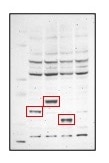 |
FH James (Verified Customer) (11-30-2022) | Very good antibody
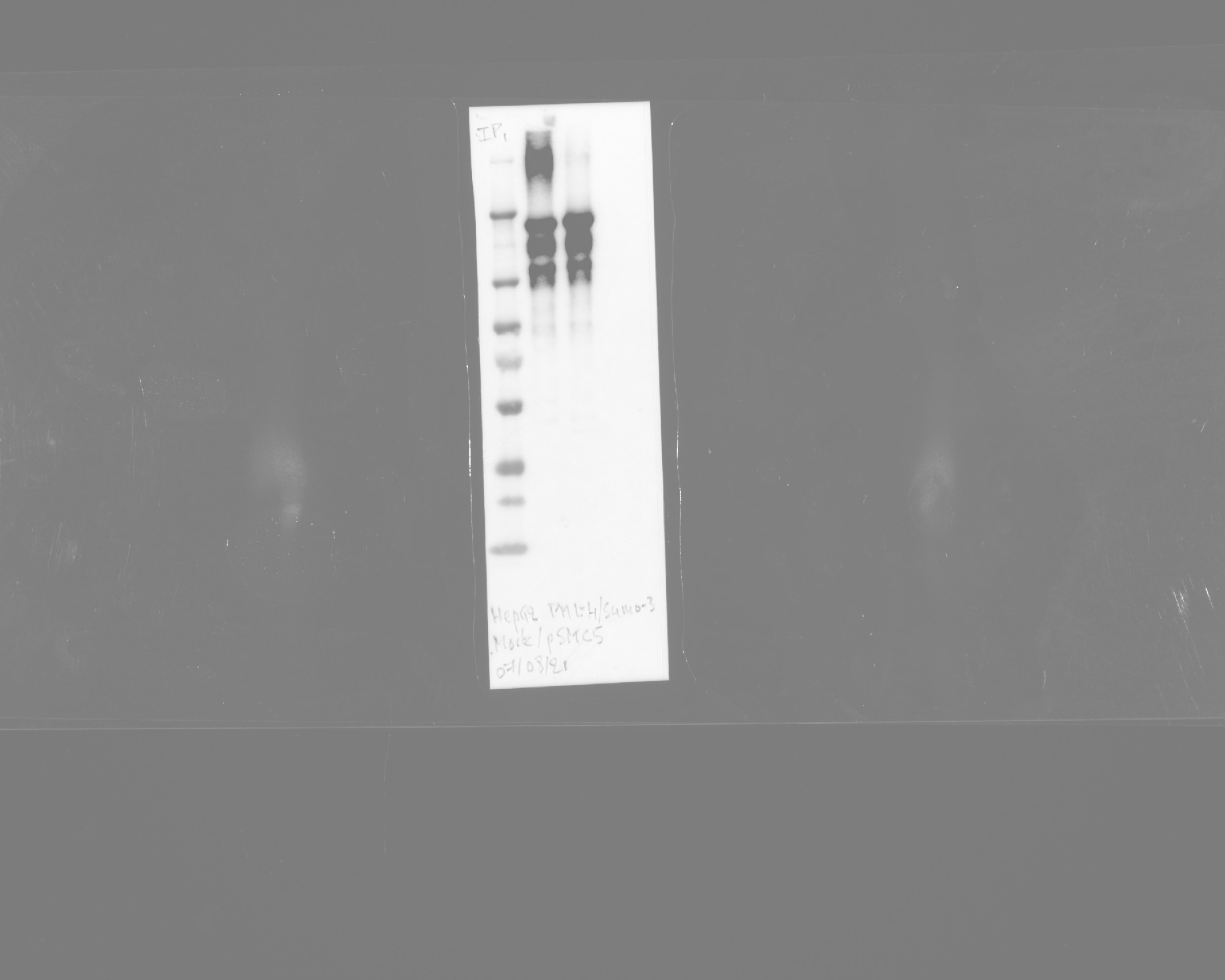 |
FH Boyan (Verified Customer) (08-03-2022) | gives a good signal in IF
|
FH Chahat (Verified Customer) (06-08-2022) | The myc antibody gives clear staining!
|
FH WEI (Verified Customer) (03-08-2022) | Good antibody for detecting overexpression proteins in 293 cells.
|
FH Minze (Verified Customer) (01-11-2022) | it works well for immunofluorecence so far.
|
FH Phoebe (Verified Customer) (03-01-2019) | This antibody was very clean in a western blot to detect Myc-tagged pol2 in S cerevisiae whole cell extract and chromatin fractionation samples.
|
